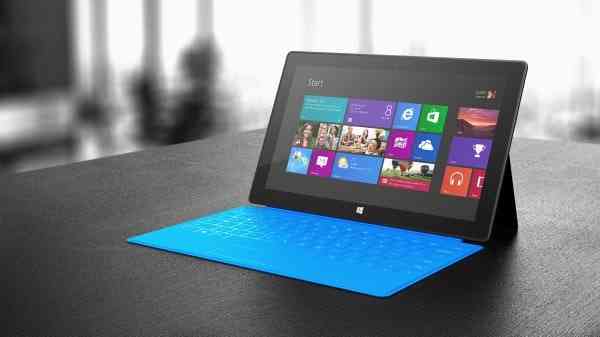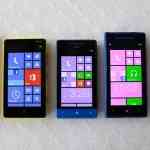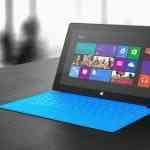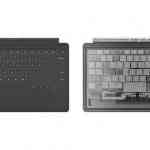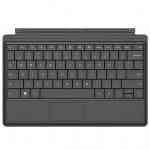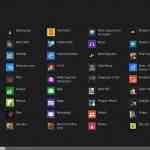Last week a couple of us COG staffers had the chance to attend a Windows 8 event in downtown Vancouver. The fine folks at Microsoft and their PR firm had set up some specific stations for us to check out a few Windows 8 enabled devices including the Surface, some Win 8 Phones, a couple of Xboxes, as well as a few laptops and other tablets that featured Windows 8 OS. As I sit here in front of my computer I am trying to figure out how to write my impressions. I have come to the conclusion that the best way is to write as a general consumer who has an interest in everyday technology. With that in mind I am not going to bore you with any technical jibber-jabber or whatnot. So sit back, take a sip of your coffee, and enjoy the read.
One of the first devices that I was attracted too was an HP Envy 14 inch laptop with a touchscreen. I found the hybrid approach pretty neat. We have had Windows 8 installed on our family computer since February of this year, but given that it is my wife’s main computer, and not mine, I haven’t had a lot of experience with it. My wife sure has had most of the time and she still finds it tough now and then. That being said, once she did learn some of the aspects of the OS she has come to like it more then she thought she would. One of the kind folks from Microsoft Canada came over and asked us if we would like to see some of the “hybrid” features that make a touchscreen laptop so intriguing with Windows 8. So we let her do her thing. She did a “BING” search for Lady Gaga, and once the results showed up she did a simple swipe of the screen and put the results onto the far left side of the screen. She then tapped on one of the music finds, a new section opened up, and with a touch of the right side of the screen she was able to show how simple it was to share the information with other people. What amazed me was how simple it was and how the touchscreen made it so fluid. I asked her to show me the same steps with a mouse. She reset the screen and started again. Although not as fluid as when doing it by touch, it was still quite simple and the results were the same. And to think, this was just the start of the night. I’ll cover more of my Windows 8 OS experience in a bit.
One of the biggest things I was interested in looking at next to the Surface were the Win 8 Phones. I headed over to the Rogers table and checked out what they had. I found the 8 gig and 16 gig versions of HTC’s 8X, the Lumina 920, and the Samsung ATIV. Although I have seen lots of articles and pictures of the new Win 8 Phones, being able to play with them was enlightening. I found myself drawn to the Lumina 920 and the Samsung ATIV. The Lumina is touted to be the “flagship” phone, and it did not disappoint. Although somewhat heavy in comparison to other phones on the market, it is one heck of a piece of hardware. The added Nokia features, such as Nokia Drive (a GPS), Nokia Lens, and Nokia Transit to name a few, really make this an intriguing piece of hardware. The 4.5 inch screen is incredibly clear and the colour is amazing. As for the Samsung, it is basically a Galaxy S3 redesigned and rebadged for Windows. Its’ 4.8 screen impressed me too but in the end it is a Galaxy S3. As for the Win 8 software, I have to say that it really caught my eye. The ability to customize the start screen to your liking is amazing. The tiles are so pleasing to the view and being able to change the size of them all makes for a very unique ability to set things up the way you want your home screen to look.
Something that I give Microsoft credit for in regards to the Win 8 Phones is that every phone maker is on even ground. The hardware is designed for the software, so each phone has a 1.5 GHz dual core processor and the OS runs buttery smooth. One phone does not seem speedier then the other and the Win 8 experience is pretty much the same across them all. After spending time with the phones I ended up picking up a Lumina 920 the next day. Yep, I made the full switch to the Win 8 Phone. For me, being an Xbox gamer, and having the ability to use Smartglass, access my Xbox LIVE account seamlessly, and play mobile games that have achievements, was a selling point indeed; however, I was truly impressed with the mobile OS and the experience I had at the event, so I made the plunge and I am going to get deeper into the OS as time goes by. So if anything, this event did sell me on the Win 8 Phone for sure and I am really enjoying my phone to date.
After spending some time with the phones, I headed over to the Surface to see what it had to offer. Now I am not a “tablet snob” when it comes to any one brand. We have two iPads in our house, and I recently acquired a new Android based tablet, so I really wanted to check out the Surface to see what it was about. Now you have to remember the Surface RT, which is the one available right now, is a consumer model based on an NVIDIA Tegra 3 ARM CPU running a customized Windows 8 OS meant for this level of tablet. The Surface Pro has recently been finalized and announced as coming out in January and it will provide users with a more PC like experience as it has a full version of Windows 8 and runs on an Intel i5 chip.
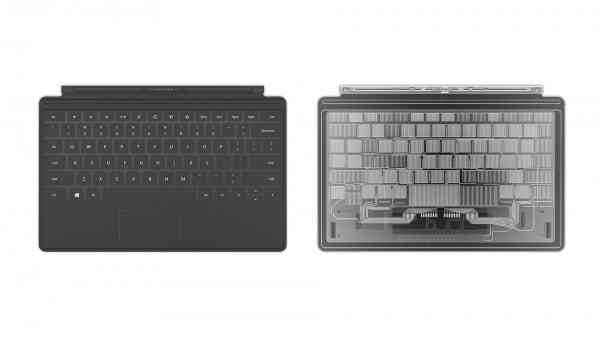 One of the features I was interested too look at was the fact that it offers up a quasi-like computer experience. The much talked about Touch Cover (keyboard) was on display. I really wanted to see what this was all about, so alas I finally got a chance to type on it. All in all in worked fairly well. I was able to type fairly accurately but I felt that it would take quite a bit of time to get comfortable with the soft-touch keyboard. That being said, it is very functional for typing up e-mails and taking some brief notes. There was also a Surface with the Type Cover (real keyboard) and I took it for a test drive, I mean test type, and found that my accuracy increased dramatically and I was able to type much quicker. The Surface RT also has “Office” tools, so it was neat to see Excel, PowerPoint and Word on the screen. This is a key selling feature for many as you can take the Surface on the road with you and get some work done. Add to this the USB port, Micro SD slot, and the ability to output HD to an external display and you have some great features.
One of the features I was interested too look at was the fact that it offers up a quasi-like computer experience. The much talked about Touch Cover (keyboard) was on display. I really wanted to see what this was all about, so alas I finally got a chance to type on it. All in all in worked fairly well. I was able to type fairly accurately but I felt that it would take quite a bit of time to get comfortable with the soft-touch keyboard. That being said, it is very functional for typing up e-mails and taking some brief notes. There was also a Surface with the Type Cover (real keyboard) and I took it for a test drive, I mean test type, and found that my accuracy increased dramatically and I was able to type much quicker. The Surface RT also has “Office” tools, so it was neat to see Excel, PowerPoint and Word on the screen. This is a key selling feature for many as you can take the Surface on the road with you and get some work done. Add to this the USB port, Micro SD slot, and the ability to output HD to an external display and you have some great features.
But alas, not all is well. The Surface RT does not support POP3 e-mails, which a lot of internet providers base their mails on, as well as a lot of work locations. There is also no native outlook program on the Surface, so if you are looking to access your home or work e-mails that are POP3 based, you better be creative. My research into this indicates that there are “work arounds” such as using outlook.com or google e-mail, but I am sure the general consumer will think this is a hassle. I know that the Surface support team is fielding a lot of customer calls about this fact, and it is sort of a sore spot of the Surface experience. The iPad and many Android tablets support POP3 e-mails, and they are not PC based tablets, so I cannot understand why the Surface RT would have this issue. Hopefully it is something that can be fixed with a firmware update, because if it is not I see this as being somewhat of a strike against it with the general consumer who will not want to take the time to find, set-up and use a work around to access their e-mails. Simplicity is king and in this area the crown is somewhat lost.
As I played around with the Surface, exploring the apps that were already downloaded, the screen was very responsive and the overall experience was quite good. Many have complained that the app selection is not on par with iOS or Android, but I think this is unfair as both Apple and Google were once in the same boat as they did not have a wide selection of apps. I believe that it will only be a matter of time before more apps are developed and the Win 8 app store becomes more populated. That being said, there is a decent enough selection, from productivity to games, at this time to keep anyone busy with their Surface and more apps are indeed being added on a daily basis.
I mentioned earlier that I would speak a bit more about Windows 8 OS as a whole. As I played around with the other hardware at the event (e.g. Lenovo Yoga, Samsung Tablet, etc) what came clear to me is that Microsoft is trying very hard to make a change in its OS and the user experience. If anything they are making an effort to offer a similar experience across all Windows/Microsoft based platforms, from mobile phones, PCs, tablets, to its long running gaming console, the Xbox 360 (and most likely its successor). What is evident is that they have also made a drastic change as they turn to the “metro” style of the OS as the tiles have become so evident in their use. If anything they are thinking outside the standard OS box and trying to make something that is new, refreshed, and customizable for the user. There is a lot of simplicity to the OS once you get to know it, as I learned from watching all the Microsoft Canada reps using the products on the floor. It is a big step for Microsoft but I think it is something that is worth looking at. They are trying to do something new and if anything I can say they are off to a great start. Sure, some will not like it, but if Microsoft did not try to change things up would people complain then too. Users have to try it to understand and not just give up because it is new and unfamiliar.
I have to give a big thanks to the folks at High Road Communications for arranging this event and throwing us out an invite. And a big thanks to all the Microsoft Canada staff that made their way out to Vancouver from Toronto for the evening. I had an enjoyable time checking out all the hardware that was using the Windows 8 platform and if anything it gave me a bit more insight into where things may just go from here. In my humble opinion, people should make an effort to check out what Microsoft is doing as the Windows 8 experience is worth trying out.


